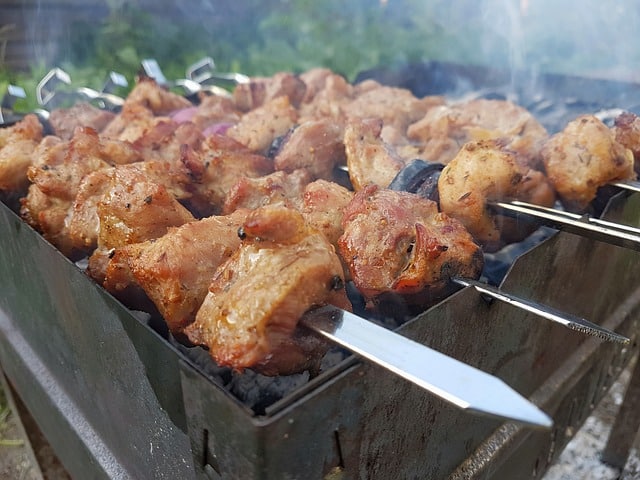
An elongated and pointed iron that is used to roast food is called a spit.
The concept of espiedo refers to a spit . A long, thin iron is called a spit.
Specifically, the idea refers to a specific spit: the spit , which is the pointed rod where the food you want to grill is stuck. By extension, the technique that consists of using this element to cook food is mentioned as espiedo.
The spy as an object
The espiedo - also called spiedo - can be considered as a kind of metal spike or skewer . What is intended to be cooked through the action of fire is nailed into it.
There are different kinds of spies. Some are small since pieces of meat are roasted in them, while others are longer to roast even a whole animal.
The important thing about the spit is that it can pass through the food, is easy to handle and is resistant to fire or high temperatures. Thus the spit can be used for cooking without problems.

The concept of espiedo can refer to the metal skewer or to the culinary technique that is based on its use.
A historical technique
As a culinary technique, espiedo has a great history . In the Middle Ages , for example, it was already very popular.
For spit cooking, the food is pierced with the pointed rod and placed near the fire. The usual thing is that, constantly or every certain amount of time , the skewer is rotated so that the cooking is even.
At first, the spoon (the utensil) was attached to a lever that allowed it to be rotated manually. A person, then, was dedicated to turning the spindle by operating the lever in question.
Over the years, animal traction , steam engines and clockwork gears were used to facilitate turning. Finally, an electric motor began to be used to automate movement.
The importance of the spindle turn
Grilling on a spit can consist of resting the rod with the meat on the grill and rotating it some time later. In these cases, it is common for the food to be brought to the table on the spit itself.
However, the technique is usually associated with the continuous rotation of the spit. There are ovens where the skewers are placed horizontally and rotate thanks to a motor, with which the heat reaches all sides or parts of the food.
Homogeneous cooking is not the only advantage of rotating the spit. Generally, slow cooking is encouraged and the meat is moistened and flavored with its own juice , leaving it tender.
Rodizio type restaurants
In the Brazilian gastronomic scene, churrascarias ( steakhouses ) are famous, restaurants that specialize in sword meats . These establishments usually operate with a service known as rodizio , where diners pay a fixed price and choose between the cuts that the waiters bring to the table , directly pierced on the steak.
This format is also known as espeto corrido . While the meat is brought by the waiter to each table, generally the starters and desserts are available on large tables to which customers have to go to serve themselves.
